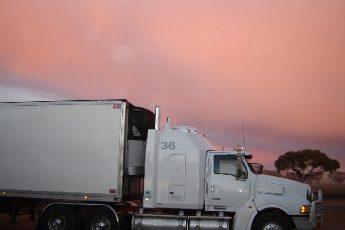Anyone who reads this list knows what a hashtag is. They are everywhere on the Internet, and it is almost impossible to find social networking sites and applications wherever everyone use them.
However, there are many misconceptions about hashtags. Moreover, it is time to deal once and for all the once-not-so-common hash sign which was firstly and exclusively in the business environment. Threfore, fasten your seat belts and let us get down to the list. We are going to surprise you!
- 10. The difference between the hashtag and the pound sign
- 9. Twitter did not invent the hashtag
- 8. Its real name is neither “hashtag” nor ” pound sign”
- 7. Telephone manufacturers added it to phones just like that
- 6. There are two types of hash mark
- 5. Why is C # called C-sharp (“C sharp”), not C-hash (“C hash mark”)
- 4. Why Chris did not patent the hashtag
- 3. How lb became #
- 2. How it got its name
- 1. Why is this word controversial
10. The difference between the hashtag and the pound sign
There is a difference between the pound signand the hashtag, and it is important to clarify that before delving into this interesting, instructive, and informative list.
The character (#) is a hash sign, and that same character, along with its accompanying word, is a hashtag. This is why #Bugaga is a hashtag, but simply # is not. However, for some reason, many people refer to the “#” sign as a hashtag.
9. Twitter did not invent the hashtag
The hashtag first appeared on Twitter, so it is no surprise that many people think Twitter invented it. But Twitter did not invent the hashtag. In fact, this social network was against this invention and the use of hashtags, which its leaders passed off as “boring.”
It was Twitter user Chris Messina who invented hashtags in August 2007
Twitter was new at the time, and Chris wanted to make tweets more searchable. He suggested using a hash sign, which he called “pound,” in front of keywords to make tweets more organized and easier to find.
Chris settled on this mark because so it a lot on the IRC networks where he communicated with his friends at the time. He immediately started using the (then not clickable) hashtag in his tweets and soon made a 2,000-word sentence that he presented at Twitter headquarters to Biz Stone, one of Twitter’s founders.
Stone hardly listened to the proposal, as he was preoccupied with solving a technical problem that had arisen. In the end, he dismissed the idea as “too boring” to catch on, and added that Twitter would write an algorithm for sorting threads in the future.
Hashtags only became popular in October 2007 during the San Diego bushfires when Chris suggested that users should use hashtags. Thereby he spurred Twitter to update their code and make hashtags clickable. The rest, as they say, is history.
8. Its real name is neither “hashtag” nor ” pound sign”
In the previous point, we mentioned that Chris called it ” pound sign” in his tweet. This was not a mistake. The term “hashtag” did not exist when he wrote his tweet. The word “hashtag” itself in this sense is relatively new, and is just one of the names of the pound sign among Americans.
Many people, especially Americans, refer to the hashtag as “pound sign” because it comes from “lb”. It is the acronym for pound and the common US unit of weight.
“Lb” is shorthand for “libra pondo”, a Latin term that literally means “correct weight”
The libra sign gradually evolved into # when scribes began adding a hyphen to the top of the “lb” centuries ago.
The pound sign has a name of a “hashtag” because of its similarity to the stripes on military uniforms, that is a “hash”. However, its official name is “octothorpe”, which means “eight ends” in Latin.
7. Telephone manufacturers added it to phones just like that
In 1963, telephone manufacturers invented the touchtone system to solve problems typical of earlier phones.
Thanks to this new system, each button on the numeric keypad has been assigned a specific tone for rows and columns. This means that each digit, when pressed, made a sound consisting of two different tones: one from its row, and the other from its column. Sounds may seem useless and even annoying to us, but this is how the system determines the numbers that we press.
This means that a telephone with 12 buttons arranged as standard in 3 columns by 4 rows (3×4) can emit 12 tones.
However, the first phones had 10 buttons
The last row only had the number “0”, leaving two extra spaces (and tones) left and right unused.
Engineers at telecommunications company AT&T, which then owned the telecommunications research center Bell Laboratories, added the * and # buttons to use these locations. The buttons were not used in any way, and the engineers hoped that someone could find use for them in the future. Later, these buttons have helped to get to access other functions of the phone. They still serve for the same purpose.
6. There are two types of hash mark
The International Telecommunications Union (ITU) is the UN specialized agency responsible for setting common standards for information and communication services and technologies. In 1988, it released a guide that recommended phone manufacturers to arrange numbers and symbols in one of three ways.
The first is a common 3×4 arrangement: 1, 2, 3 on top, then 4, 5, 6, then 7, 8, 9 and finally *, 0, #. The second is the not very common 2×6 or 6×2 arrangement. However, the ITU has also allowed phone manufacturers to use the now-discontinued 3×3 (+1), 5×2, or 2×5 arrangement if they choose not to add the * and # buttons to the number pad.
Speaking of the # button, the ITU officially recognizes two symbols. Those are: the first is the European version, in which the “grid” is displayed vertically at an angle of 90 degrees. The second is the American version, in which the “grid” is drawn tilted to the right at an angle 80 degrees.
Today, the vertical version seems to have all but disappeared, leaving the slanted “grille” version as the dominant designation.
5. Why is C # called C-sharp (“C sharp”), not C-hash (“C hash mark”)
Many people, including novice programmers, often refer to the C # programming language as C-hash (“C pound”) or C-pound (“C pound”) instead of its real name C-sharp (“B sharp”). This is confusing. Why do we call it “B sharp” even though it is spelled with “hash” or “pound” depending on preference.
Anders Hejlsberg, the man who led the team that developed the language, said they originally named it Cool, which stands for “C like Object Oriented Language”. However, they abandoned this name because it was difficult to register as a trademark.
In search of inspiration for a new name, the team turned to the C ++ programming language
They added two “+” signs to make C ++++ and then combined all four “+” signs to mimic the sharp sign used in music. Technically speaking, “B sharp” is written in C? Rather than C #. However, people use the hash mark because it is on the keyboard.
4. Why Chris did not patent the hashtag
If Chris had patented the hashtag, he would have become a millionaire or even a billionaire, but he did not. In a response posted on the Q&A site Quora, Chris said he did not patent the hashtag for two reasons.
The first was that the patent would make him a monopoly, which would delay or even stop the massive adoption of hashtags. This, he said, is counterproductive and goes against the main reason for creating the hashtag. He created the hashtag because he wanted people to use it. That is, a lot of people.
Chris added that the hashtag is a product of the internet and should not belong to only one person
He has no interest in making money from hashtags, and the pleasure of seeing people use them is enough compensation for him. So, readers, more hashtags! Make Chris Messina happy!
3. How lb became #
We have already explained that the hash sign comes from lb. This is an acronym for the Latin term “libra pondo.” Let us take a closer look at this at this point.
The Romans shortened it to lb and used it as a unit of weight
This remained until it entered the English language. There scribes added a hyphen across the top of the letters “l” and “b”. They made it in order to indicate that this was a short form of a longer term.
The “Lb” with a hatch at the top gradually evolved into a # symbol as the faster scribes paid little attention to its spelling. At the same time, this word acquired a second meaning in English. It happened when businesspersons began to use it instead of designating a number (No.). So # 1 means # 1 (or “number one”), # 2 means # 2, and so on.
That is why this symbol has another name of a number sign. This is also the reason why the typewriter manufacturers kept it along with the @ symbol, which executives used as a short form for “at the rate of”. Businesspersons were the first to buy these typewriters, so it made sense to keep the commonly used symbols.
The # symbol was added to phones only for the reason that we explained in paragraph 7
2. How it got its name
In paragraph 9, we mentioned that Chris Messina called the hash sign in his now famous tweet “pound”. What we have not mentioned is that he wanted us to call the hashtags “channel tags” or “tag channels”, but both of these names never caught on.
So where did the word “hashtag” come from?
For the answer, let us turn to Stowe Boyd. On the same day Chris proposed the hashtag, Stow Boyd commented on his post, suggesting that name of the “hash tag. Right, that was not a mistake: it had to be a “hash tag”, not a “hashtag”.
Someone once removed a space and merged two words together. We do not know who this person is, and we are not even sure that this person knows that he created a new word. Perhaps someone did it simply by mistake. Probably.
1. Why is this word controversial
The word “hashtag” officially became English when it appeared in the Oxford English Dictionary in June 2014. Until then, it was just another slang.
The Oxford English Dictionary only adds new words to the English dictionary if they have a lot of users
Most of the words appear as slang or are borrowed from other languages before officially becoming English words.
However, the Oxford English Dictionary made things a little more complicated when it defined a “hashtag”. That is as a word or phrase following a hash mark, or the mark itself, especially when it appeared on a phone or computer. This means that it would be correct to call # a hashtag, and therefore #Bugaga is the “Bugaga hashtag”.
If you are wondering why we did not tell you this at the very beginning of this list, we have done in order to avoid confusion between sign with a word. In this article, we have used both the hashtag and pound sign extensively, so, it would not be confusing.
In addition, the Oxford English Dictionary added a caveat: “… especially when it appears on a phone or computer.” However, if you insist on naming a separate # hashtag, then we recommend naming a #with a word (eg #Bugaga) with a hashtagged word. Twitter does this, and it prevents confusion.








